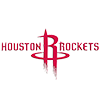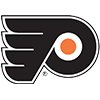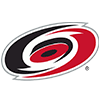What follows is nauseatingly thorough. If you want the brass tacks, scroll down to the bullet points. Or maybe read the jokes in the first paragraph and then scroll down to the bullet points.
Last week, in these pages, I introduced the raison d'etre of this column -- namely, to explore the untamed and incredibly nerdy wilds of advanced basketball metrics. This week, I intend to take the first step on an ill-advised, but incredibly well-financed**, journey into the selfsame wilds.
* A term too disgusting to render here in English.
** I don't want to brag, but RotoWire pays me 10,000 Italian Lira per month.
There are a number of caveats to issue before I/we begin in earnest. Like, for one: basketball is a fluid game -- as opposed to turn-based one like baseball -- and resists statistical analysis for that reason. Also, for two: much of the analysis that needs to be done on the available data has not yet been done -- or, at least, has not yet become a matter of very public record. As a result, it's difficult in many cases to know what represents a reliable sample size.
And, of course, there's the third, and probably most important, caveat -- which is, specifically, that I have almost no idea what I'm doing.
So, sorry about that in advance.
As far as this first step is concerned, it'll be in the direction of something I mentioned in my last dispatch -- namely, shot-location data.
Shot-location
What follows is nauseatingly thorough. If you want the brass tacks, scroll down to the bullet points. Or maybe read the jokes in the first paragraph and then scroll down to the bullet points.
Last week, in these pages, I introduced the raison d'etre of this column -- namely, to explore the untamed and incredibly nerdy wilds of advanced basketball metrics. This week, I intend to take the first step on an ill-advised, but incredibly well-financed**, journey into the selfsame wilds.
* A term too disgusting to render here in English.
** I don't want to brag, but RotoWire pays me 10,000 Italian Lira per month.
There are a number of caveats to issue before I/we begin in earnest. Like, for one: basketball is a fluid game -- as opposed to turn-based one like baseball -- and resists statistical analysis for that reason. Also, for two: much of the analysis that needs to be done on the available data has not yet been done -- or, at least, has not yet become a matter of very public record. As a result, it's difficult in many cases to know what represents a reliable sample size.
And, of course, there's the third, and probably most important, caveat -- which is, specifically, that I have almost no idea what I'm doing.
So, sorry about that in advance.
As far as this first step is concerned, it'll be in the direction of something I mentioned in my last dispatch -- namely, shot-location data.
Shot-location data is, simply put, a record of a player's shooting from five different distances: At Rim, <10 feet, 10-15 16-23 and threes. it comes to us in two forms: both the quantity of a player's shots (that is, how many he takes from each respective distance) and also the efficiency of those shots (that is, his field-goal percentage from each of the distances).
As I mention above, basketball analysis isn't yet to a point where we're entirely able to separate the signal (i.e. a player's "true talent") from the noise (i.e. the random variation that's present in small sample sizes). Specifically, we don't really know what sort of sample sizes are required to make statements about a player's true-talent level.
On the other hand, so long as we proceed with a bit of caution, there's no reason to throw out the baby with the bathwater (especially because baby-throwing-outing is illegal).
Today, I'd like to look at shooting from the At Rim range. Specifcally, I'd like to look at increases and decreases in attempts from the At Rim range between last season and this one.
Why At Rim? Well, as you might expect, players convert baskets at a considerably higher rate at the rim than they do from other ranges. Regard, the league-average field-goal percentages for our five respective ranges:
Range FG%
At Rim 61.0
<10 44.0
10-15 39.8
16-23 39.6
Three 35.2 (or, 53.2 eFG%)
"Yes, Carson," maybe you're saying, "it makes sense that bigger players score efficiently near the basket, but what about smaller players? Is it possible that these league-average numbers aren't representative of a point guard's scoring patterns, for example?"
That's a reasonable consideration -- especially for anyone who watched Brandon Jennings (42.7% FG on 286 At Rim attempts) play last year. In fact, it appears as though point guards do shoot less efficiently near the hoop than the "average" player. Still, it remains the most efficient spot for them on the floor.
Boom, stats:
Range FG%
At Rim 56.5
<10 43.1
10-15 41.5
16-23 40.3
Three 35.5 (or, 53.8 eFG%)
The other answer to "Why At Rim?" is based on an assumption. The assumption is this: that sample sizes for shot-location field-goal attempts become reliable more quickly than those for field-goal percentage. Consider an analogy to baseball. In baseball, a batter's swing percentage becomes reliable -- that is, it begins to describe something about him -- after just 50 plate appearances. Other stats, like home-run rate and batting average, become reliable only after many more PAs.
I'll suggest that, for the purposes of this conversation, field-goal attempts by range are like swing percentages in that they're more a measure of a player's tendencies than of the result of those tendencies. And just as swing percentage necessarily precedes home-run rate or batting average, so, too, does attempts by range necessarily precede field-goal percentage by range.
Knowing all this, it's very likely that, looking at players who are taking either more or fewer shots near the basket, we can begin to understand what may or may not be affecting their shooting and scoring numbers this season.
In other words, this is where we get to look at actual names.
Let's start with a list of players who are taking fewer shots at the rim this season than in 2009-10. (Note: I'm only considering here players who took 100 or more field-goal attempts at the rim last season. I've also included the player's overall FG% in 2010-11.)
Name Diff 0910 1011 TotFG%
Brook Lopez -3.44 6.60 3.15 -6.0
Chris Bosh -3.00 5.86 2.86 -0.9
Corey Maggette -2.95 5.03 2.08 -12.6
David West -2.85 5.47 2.62 +1.6
Brendan Haywood -2.84 4.67 1.83 +4.1
Josh Smith -2.70 6.70 4.00 Same
O.J. Mayo -2.66 3.88 1.21 -5.3
Marcus Thornton -2.66 4.37 1.71 -5.1
Trevor Ariza -2.64 4.64 2.00 -0.8
Gilbert Arenas -2.49 3.94 1.44 -2.0
At first glance, Brook Lopez seems to be having serious problems. After taking 5.5 FGA at the rim in 2008-09 and 6.6 last season, Lopez is down to 3.2 this year -- or less than 50% his previous season's average. His overall field-goal percentage -- which has declined from 49.9% last season to 43.9% this year -- appears to bear out his decline.
"Appears" is the operative word here. Looking closer, we that as Lopez's At Rim totals have dropped by 3.4 from last season to this, his totals from <10 have risen -- wait for it by exactly 3.4. while it's possible that lopez is actually taking shots from slightly further out this year, it's more likely that what we're witnessing here is scorer's bias -- that is, one scorer classifying a shot as <10 where another would classify it as at rim. therefore, it's probably best to discard lopez's name (and David West's, too, for the same reason) from this list.
However, the other eight guys on this list have all legitimately taken fewer shots at the rim this season. And, without even checking, you might notice one thing they all have in common. If not, here's the thing: all of them are playing fewer minutes per game this season.
I was curious about that, so I ran the number on the 184 players in this study. In fact, the correlation between playing time and number of At Rim shots is approximately 0.60 -- meaning, about 60% of the change in At Rim shots can be attributed to a change in minutes on the court.
That's a helpful discovery in one way, in that it reinforces the importance of playing time to fantasy production. But I was also curious about players for whom playing time was less influential.
Accordingly, here's the same kind of top-10 (bottom-10?) list, except with players whose playing time either increased, stayed the same, or decreased by fewer than two minutes.
Name Diff 0910 1011 TotFG%
Josh Smith -2.70 6.70 4.00 Same
Carl Landry -2.40 5.48 3.08 -4.5
LeBron James -2.19 6.76 4.57 -6.7
A. Stoudemire -2.15 6.72 4.57 -5.7
Boris Diaw -2.12 3.66 1.54 +4.3
Danny Granger -1.95 4.45 2.50 +1.1
Rudy Gay -1.92 5.28 3.36 +2.0
Brandon Roy -1.85 4.12 2.27 -5.4
Tyreke Evans -1.78 8.36 6.58 -5.0
Stephen Jackson -1.69 6.00 4.31 +1.4
Some observations on these guys:
•Josh Smith is shooting about 10% higher from 16-23 Feet than he ever has in his career. That will likely regress, taking his field-goal percentage with it -- at least until he adjusts his shot selection.
•About 52% of Carl Landry's shots with Houston last year were At Rim. With Sacramento this season that number is basically half. Those shots have been replaced more or less by long jump shots. That's bad, bad, bad.
•Rudy Gay is currently shooting 74.5% at the rim after averaging between 57% and 60% from there over the last four seasons. That's essentially adding half a basket to his per-game point average.
•Tyreke Evans might be another instance of scorer's bias. Take note.
•Stephen Jackson, a lifetime 34.2% three-point shooter, is currently hitting 41.6% of his shots from behind the arc. That will likely not hold up.
Now here are the players who're taking more shots At Rim:
Name Diff 0910 1011 TotFG%
Jrue Holiday 2.29 2.10 4.38 -1.2
Andray Blatche 1.84 4.25 6.08 -6.0
D.J. Augustin 1.54 1.54 3.08 +4.3
Tony Parker 1.40 4.98 6.38 +4.1
Sonny Weems 1.23 1.77 3.00 -4.0
Lamar Odom 1.18 3.96 5.14 +11.4
Ramon Sessions 1.16 2.84 4.00 -5.6
Eric Gordon 1.16 4.46 5.62 +0.8
Luis Scola 0.91 4.94 5.85 +0.4
Amir Johnson 0.84 2.59 3.43 -5.2
As with the bottom 10, many of these players' numbers are skewed by playing time. Again, that's fine, but it doesn't tell us as much about their shot selection as it does their time on the court.
Here's the same kind of top-10 list, except with players whose playing time either decreased, stayed the same, or increased by fewer than two minutes.
Name Diff 0910 1011 TotFG%Eric Gordon 1.16 4.46 5.62 +0.8
Luis Scola 0.91 4.94 5.85 +0.4
L. Aldridge 0.60 3.90 4.50 -4.0
Luol Deng 0.57 4.34 4.91 -4.7
Deron Williams 0.43 4.24 4.67 -1.9
Wesley Matthews 0.43 2.50 2.93 -5.5
Goran Dragic 0.41 1.74 2.14 -1.8
Paul Pierce 0.33 4.03 4.36 +3.7
Zaza Pachulia 0.31 1.97 2.29 +2.1
Stephen Curry 0.29 2.63 2.92 +0.6
•Eric Gordon's taking about five more shots per game this year than last. About three of those are either coming At Rim or within 10 feet. That's a good sign.
•There appears to be absolutely nothing flukish about Scola's shooting profile. He's just good.
•Matthews' problem isn't At Rim shooting, it's three-pointers: he's got a 25.9% field-goal percentage outside the arc -- this, after shooting 38.2% from there last year on 165 attempts.
•Curious. I didn't really know that Zaza Pachulia was still an actual basketball player.
•Stephen Curry is a Natural Born Shooter.
Shot-location stats courtesy of Hoop Data.






































